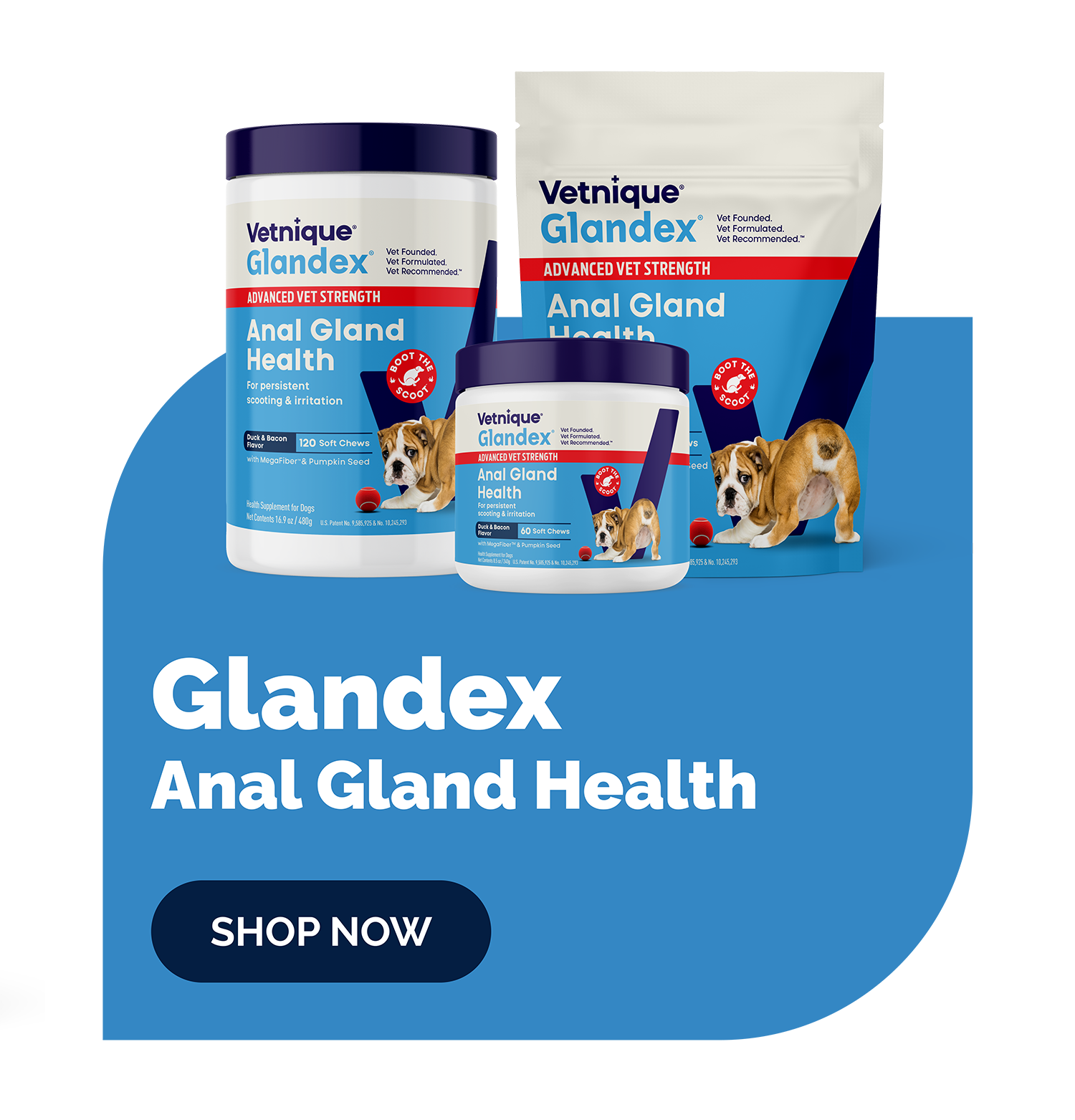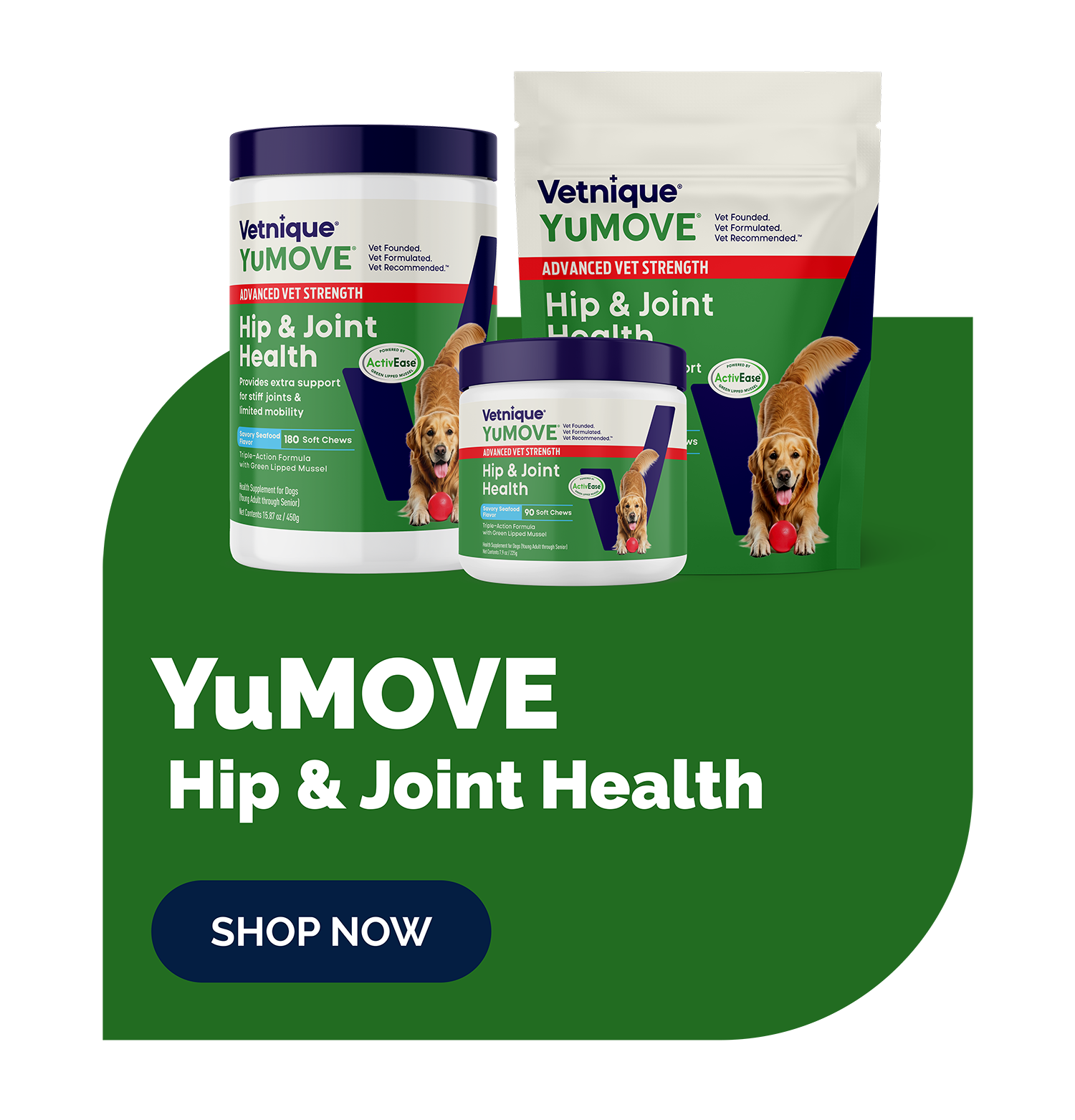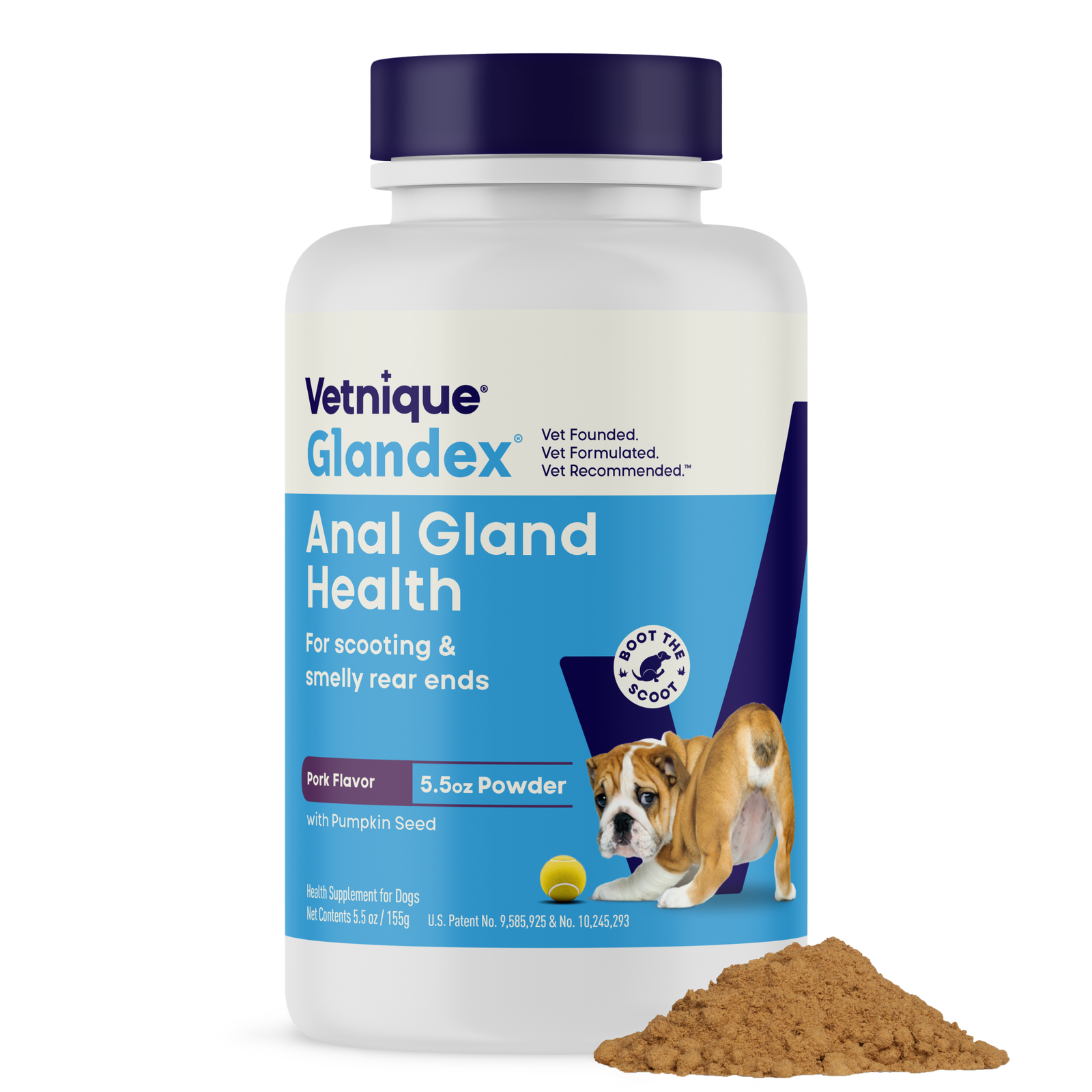How to Express Dog Anal Glands
Written by Dr. James Bascharon

One of the most common problems in dogs is anal gland infections. Located on either side of the rectum, these glands serve a dual purpose: marking a dog’s bowel movements with their unique scent and lubricating stool during defecation. Knowing how to express dog anal glands can help relieve discomfort and prevent infections.
When to Express and Clean Dog Anal Glands

If your dog’s anal glands are full and need expression, they will likely show symptoms of discomfort. The first sign is usually scooting their butt on the floor, which is caused by itching or irritation in the rear-end area. Other symptoms include a foul, fishy odor, excessive licking of the anal area, and itching, swelling, or redness around the anus.
When do dogs need anal gland expression?


Dogs need their anal glands expressed when they show signs like scooting, a strong odor, or licking the anal area. The glands might feel puffy, about the size of a grape.
How often do a dog’s anal glands need to be expressed?
Do Dogs Express Anal Glands on Their Own?
Most dogs naturally express their anal glands when defecating. However, during times of stress, dogs may involuntarily express their glands, emitting a strong odor. Impaction can also cause anal gland liquid to back up and leak in between bowel movements.
Diarrhea, which causes a dog’s stool to become soft or loose, can prevent a dog’s ability to express the anal glands during defecation naturally. While passing through the digestive tract, soft stool may not be sufficient for expressing glands, leading to impaction.
If a dog cannot release enough fluid naturally, manual expression might be necessary.
What You Need to Express Anal Glands
To express your dog’s anal glands at home, you will need:
-
Disposable medical gloves
-
Paper towels
-
Petroleum jelly
-
A towel to put under your dog
-
A bowl of warm soapy water
-
A washcloth or hygiene wipes
-
Dog treats
-
A trash bag
You can also use a lick mat with peanut butter or another spreadable treat to help distract your dog while you perform the manual expression.
How to Express Dog Anal Glands At Home
Expressing dog anal glands can be messy and smelly, so it’s often preferred to be done by a vet or groomer. However, it is possible to do it at home with the right preparation and care.
How do you manually express a dog’s anal glands?
-
Put Your Dog At Ease
Manual expression is easier if your dog is calm and compliant. Before you begin, get them comfortable with the space where you’ll be performing the manual expression. Let them sniff around, get them used to your touch, and, if needed, enlist a second person to help keep them distracted.
-
Preparation
Place your small dog on a table or have your large dog on the floor, and put on disposable gloves. Apply petroleum jelly to your thumb and forefinger.
-
Positioning
Hold your dog steady with help if needed. Insert your lubricated forefinger into the dog’s anus while positioning your thumb outside.
-
Locating and Expressing
The glands are at the 4 and 8 o’clock positions. Squeeze them gently with your thumb and index finger, holding a paper towel to catch the fluid.
-
Cleaning Up
After expressing both glands, use a warm soapy washcloth or Glandex Rear End Wipe to clean the area thoroughly and eliminate the foul, fishy odor of anal gland liquid.
-
Disposal
Dispose of gloves and used paper towels, and wash your hands thoroughly. Be sure to praise your dog for good behavior and reward them with a toy, treat, or affection.
Manual anal gland expression video (how-to)

When should I notify the vet about dog anal gland issues?
Consult a veterinarian if the fluid is thick, chunky, or discolored (green, yellow, red, or white), or if scooting persists after expression. This could indicate an infection needing medical attention. If manual expressions are painful for your pet at home, or if you worry that you may not be getting the desired results, contact your veterinarian to schedule a manual expression in the clinic. Your veterinarian can also help demonstrate the proper way to perform an expression at home.
Promoting Natural Gland Expression

Enhancing bowel movements and promoting gland expression naturally is essential for your dog's anal gland health. Here are some effective approaches:
Fiber supplements
Administering fiber supplements like Glandex can help prevent anal gland impactions, particularly for small breeds or dogs prone to frequent anal gland issues. Opt for veterinarian-approved fiber supplements to maintain stool consistency and support natural expression.
Fiber-rich ingredients
Incorporate natural sources of fiber, like apple, flaxseed, rice bran, and pumpkin, into your dog's diet. A well-balanced mix of soluble and insoluble fiber can keep stools bulky and firm, encouraging regular gland emptying.
Fresh foods
Fresh food diets, including cooked chicken, beef, carrots, peas, and fruits like apples and blueberries, can promote a healthy gut and improve digestion. Consult your veterinarian for suitable recipes tailored to your dog's specific needs.
Adequate hydration
Ensure your dog drinks sufficient clean, fresh water to aid in flushing roughage through the digestive system and facilitate natural gland expression. Aim for approximately 1 oz of water per pound of body weight daily.
Regular exercise
Keeping your dog physically active boosts digestion by enhancing motility. Daily walks, indoor or outdoor play, swimming, and hiking are excellent ways to keep your furry companion active and healthy.
Manage diarrhea
Combat diarrhea symptoms promptly, as they are a common cause of anal gland impactions. High-quality fiber supplements with probiotics can help restore gut balance and promote healthy stools.
Alleviating Dog Anal Gland Discomfort
If your dog is already experiencing discomfort from overfull anal glands, consider the following measures until you can schedule a vet visit for manual expression:
Digestive support
Provide anal gland supplements like Glandex soft chews with digestive enzymes and probiotics to ease digestive discomfort.
Hygienic care
Keep the rear end clean using hygienic wipes to reduce skin irritation and neutralize odors.
Topical relief
Apply a topical spray, like Glandex Medicated Spray, containing anti-inflammatory ingredients like Hydrocortisone to alleviate pain, itching, and discomfort.
Warm compress
Try a DIY warm compress with Calendula essential oil and warm water on the affected area for soothing relief.
Ask For Help When Necessary
If you haven’t expressed your dog’s anal glands before, it can be helpful to get support from a professional. Your vet or a trained groomer can show you how to do it properly. If you’re uncomfortable or worried about being bitten, scheduling a professional appointment is the best option.
What happens if a dog’s anal glands aren’t expressed?
If a dog cannot empty its anal glands naturally, the fluid thickens, causing swelling and potential infection. This can lead to painful abscesses that might rupture, necessitating immediate veterinary care.
What health issues can affect a dog’s anal glands?
Certain health conditions increase the risk of anal gland problems, such as atopic dermatitis, obesity, low-fiber diets, chronic diarrhea, and allergies. Smaller breeds and older dogs are more prone to these issues, particularly breeds like Cavalier King Charles spaniels, Cocker spaniels, Shih Tzus, and Bichon Frisés.
By recognizing the signs of anal gland issues and knowing how to express them, you can help your dog avoid discomfort and maintain better health. If you’re ever unsure, seeking professional assistance is always the safest choice.
Reduce expensive vet visits and try Glandex today.
Boot the Scoot™ with Glandex
-
Daily Supplements
-
Daily Powders
-
Medicated Sprays
-
Read End Wipes

Money-Back Guarantee






